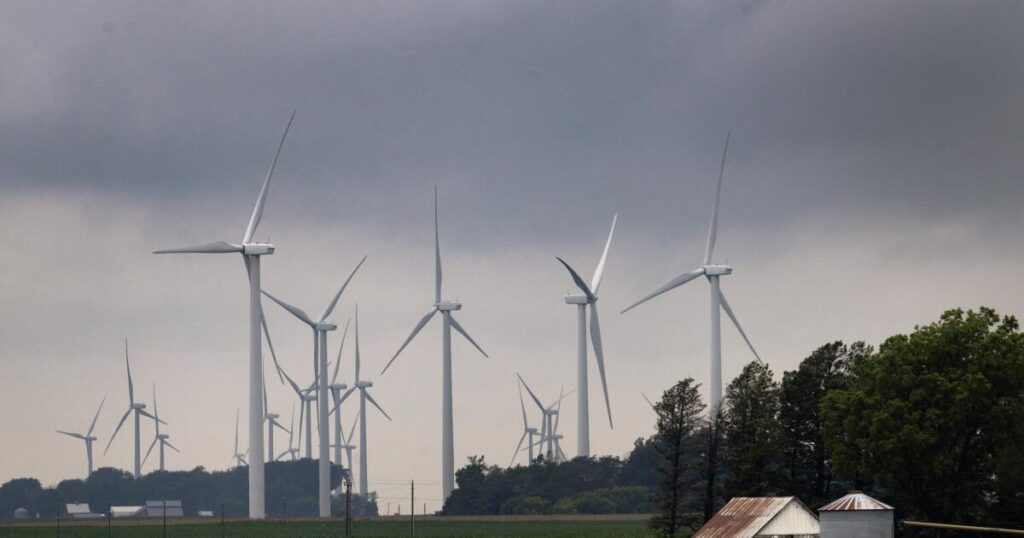A modern windmill — or wind turbine, to be exact — is not so much a construction that invites affection or radiates pastoral comfort. Rather, it is something built out of an urgent necessity — a need for a better means of generating electricity, an invention made to wean society away from polluting ourselves into oblivion.
It is a device that triggers in the public mind a certain degree of apprehension, being a stern reminder of how we had all better shape up, or else. If Cervantes was right and 17th century Spaniards did think of such mills as icons of menace, then some of us feel similarly today, except that the stakes — our very existence — are considerably higher.
It is more than a little surprising that the wind-powered electricity generator took so long to invent.
It was 1887, more than 50 years after the English physicist Michael Faraday invented the electrical generator, when a Scotsman named James Blyth used the kinetic energy of moving air — the wind blowing around his holiday cottage in northeastern Scotland — to generate electrical power for himself. His homemade machine managed to produce enough electricity to keep all 10 of his incandescent light bulbs burning and to power a small lathe — for no running cost whatsoever. The wind in Marykirk, Aberdeenshire, like the wind everywhere else in the world, was, at least ostensibly, the precious gift of nature, given away for nothing.
The context of this small piece of history has an inescapable irony to it. By the time of James Blyth, the Industrial Revolution was some 90 years old and going full tilt. The newfangled idea of generating electricity, which it was accepted would massively enhance industry’s various processes, and generating it by the employment of steam-powered turbines, happened to find particular favor in the Scotland of the day, for one very good reason: Scotland was thick with coal. Steam was best generated by water being boiled by the burning of coal.
To the wealthy owners of Scottish coal mines, the idea of electricity being generated from something — like wind — that was free was an assault on the noble principles of capitalism, and a gross impertinence to boot.
From the very beginning, the fossil-fuel lobby resisted wind power. Their first target was professor James Blyth.
He taught engineering at a local Glasgow college and knew what to do to convert his fascination with the potential of wind power into reality: He built in the front garden of his little cottage on the main street a rickety wooden tower, more than 30 feet tall, looming over his roof. To this he attached four 13-foot-tall canvas sails that he suspended from steel arms.
As the wind blew, so the sails turned, just as in a flour mill, rotating as they did so a hefty metal spindle that, through a series of gears, then turned a vertical spindle; at its base, by way of yet more gears, the rotation was converted back into the movement of a second horizontal rod that rotated a massive iron flywheel. This in turn was linked by a stout rope to a so-called Burgin dynamo, a state-of-the-art direct-current electrical generator with coils of copper wire turning between the wings of a powerful magnet — and which produced in a pair of stout copper wires that constant stream of flowing electrons that we now know as electricity.
Blyth was a canny fellow. Excited though he may have been to now have a source of power for his little cottage, he did not immediately connect the wires that carried it to his light bulbs or the power tools in his workshop. To do that would have limited his nighttime illumination to those moments when the wind outside was blowing and the canvas sails were turning. This problem he solved by hooking up his dynamo to a cluster of imported and newly invented French accumulators, the forerunners of modern rechargeable batteries. This arrangement meant he could make use of his electrical power when he needed it.
Moreover, his windmill and dynamo worked so well, the North Sea winds were so robust and his own domestic requirements so modest, that he found himself in the happy position of having electricity to spare, and could offer it around to his neighbors. But — and here the meddling of the fossil-fuel industry has to be a suspect — someone had put around word that electricity so made was the devil’s work. He offered to wire up, connect and illuminate all the streetlights along Marykirk’s village center, but the town fathers, under pressure from an unspecified quarter, declined his offer, and the roadway remained dark for the entire quarter-century during which Blyth’s wee house was lighted and cozily inviting.
He went on to build a much larger version of his domestic wind generator for the one organization that would accept his largesse — the Montrose Lunatic Asylum. Being mounted on a vertical spindle, it did not need to be turned into the wind, as traditional windmills do, and it ran happily for 27 years, charging a battery of accumulators that brought light to the hospital’s patients and staff until it was dismantled in 1914, eight years after its inventor’s death.
At the time of this writing, more than a 10th of America’s power is generated by wind. Some European countries enjoy a far greater percentage: In blustery Denmark, half of the country’s electricity is made by wind, in Germany a quarter, and down in Brazil and over in India 10% and growing.
In China, the rise of wind power generation and the size of the machines that perform the task are simply astronomical: From the western mountains of Yunnan and Sichuan — and in Chinese-occupied Tibet, with its endlessly gale-swept plateau — to the coasts off Shanghai in the east and Hainan Island in the south, turbines of ever-increasing size are making their languid presence a wholly normal feature of every skyline, every horizon.
Questions arise, of course. Birds fly into the blades and die; the noise emanating from the towers irritates some; others complain of the ruined view of the countryside; and oil leaking from the generators can discolor the blades and give the towers a look of decay. Some wonder how these immense blades will be dismantled and disposed of once their 20-year lifespan is over. And there are the inevitable accidents from maintaining equipment at such great heights.
In all other senses, though, wind turbines are seen today as a consummate success — leaving only one question. Given that Faraday invented the electrical generator in 1831, and that Blyth illuminated his cottage in a Scottish village with a wind-powered generator just 50 years later, why did it take the world a further century for the potential of wind to be realized? The planet has suffered hugely during that century, as vast amounts of fossil-fuel byproducts have been created by the burning of the coal and oil that long fueled the world’s tens of thousands of power stations — when with some thought and imagination, the wind — free, clean and blowing endlessly above us — could have been employed instead. It was an opportunity missed, with incalculable effects for us all. Let us hope we are not too late.
Simon Winchester is the author, most recently, of “The Breath of the Gods: The History and Future of the Wind,” from which this article is adapted.
The post Why we neglected wind power for a century appeared first on Los Angeles Times.




